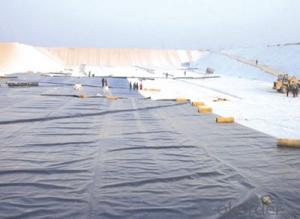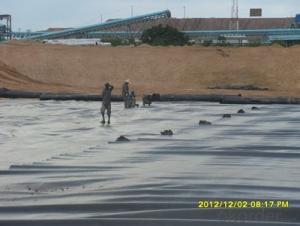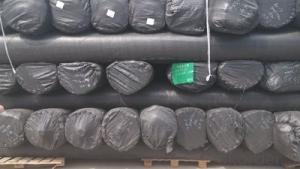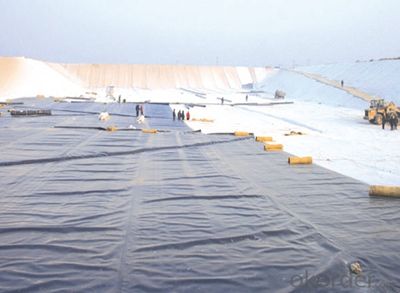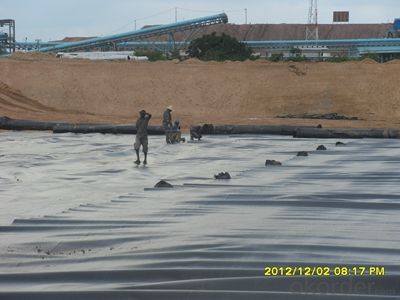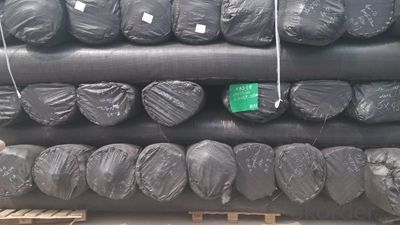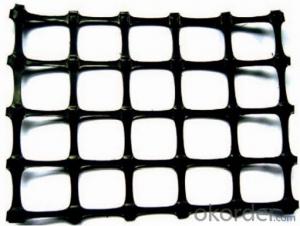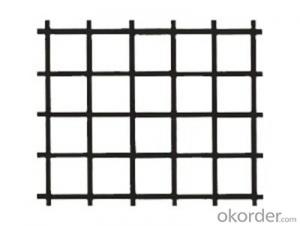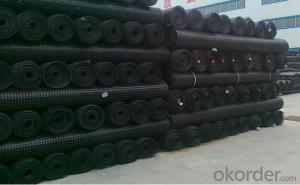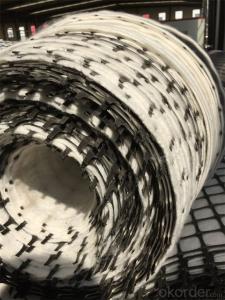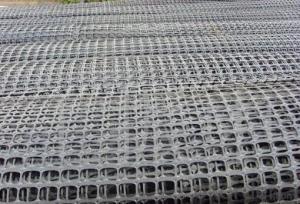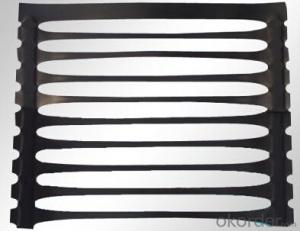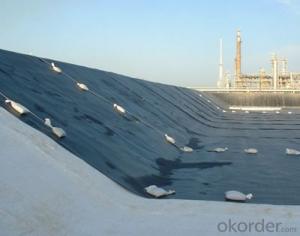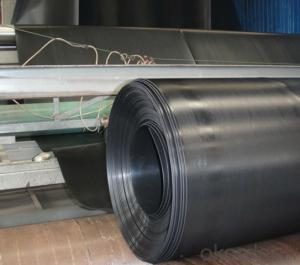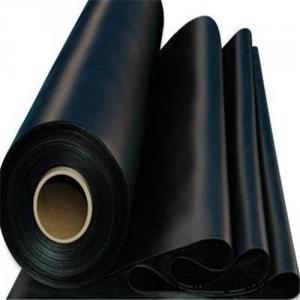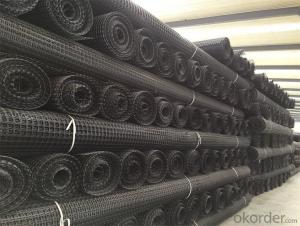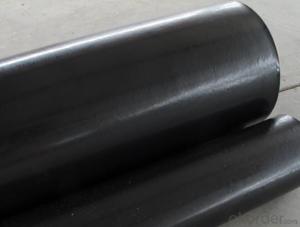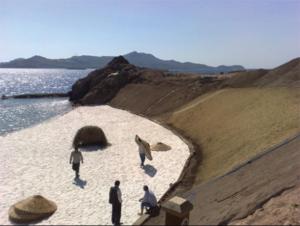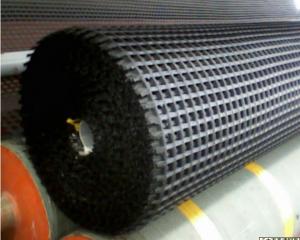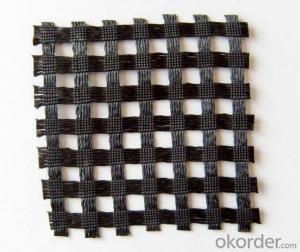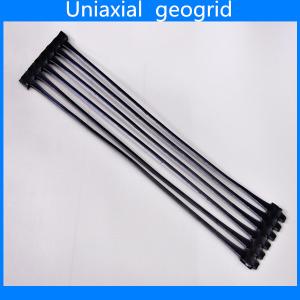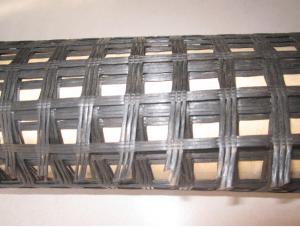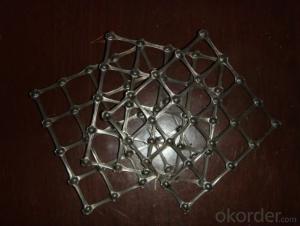Fibreglass Geogrids Reinforced HDPE Geomembrane for Environmental, Water Conservancy, Landfill, Mining, and Canal Projects
- Loading Port:
- Tianjin
- Payment Terms:
- TT OR LC
- Min Order Qty:
- 88 m²
- Supply Capability:
- 1800000 m²/month
OKorder Service Pledge
OKorder Financial Service
You Might Also Like
Introduction of CNBM
China National Building Materials (Group) Corporation (CNBM) is a state-owned enterprise in charge of administrative affairs in China building materials industry. Established in 1984, CNBM is a large group corporation of building materials with total assets of RMB 25 billion and a total staff of 30,000. Now CNBM owns more than 200 subsidiaries in and abroad the country, including wholly-owned corporations and joint ventures.
FAQ of geosynthetics :
What is geosynthetics ?
Geosynthetics form a perfect erosion control fabric used extremely widely in civil engineering to stabilize and reinforce slopes and soil under or next to roads, railways, dams, water reservoirs etc.. They can be easily applied which minimizes the time of construction, as well as they limit the resources and materials necessary.
What kinds of geosynthetics we have ?
Non-woven geotextile, geogrids, geocells, GCL, Geomembranes, Geonets, Geocomposites etc .
What is the geosynthetics used for ?
Hydraulic
Lagooning and Water Treatment, Ornamental Ponds, Golf Courses
Aquaculture and Desalination,Water Lagoons,Tanks, Reservoirs, Liquid Waste,Floating Cover Solutions, Drainage and Filtration
Environment
Tailing ponds, Leach mining,Landfills,Landfill Capping,Protection against corrosion,Vertical Barriers
Civil Works
Erosion Control,Secondary Containment,Tunnels,Linear and Surface Works,Consolidation of Margins,Soil Reinforcement,Soil Separation.
Building - Parkings,Roofing,Soundproofing
The description of HDPE Geomembrane for Environmental Projects water conservancy projects landfill mining canal
Geomembranes are impermeable geosynthetics that, until recently, were mainly used as canal and pond liners. However, modern technology has broadened liner applications to include landfills, wastewater treatment lagoons, oil and gas exploration (including hydraulic fracturing or "fracking"), aquaculture, irrigation ponds and remediation. In many of these applications, a nonwoven geotextile is used as a cushion to protect the geomembrane. In general, geomembrane liners offer excellent puncture resistance and can withstand a wide range of chemicals and temperatures. They are also highly flexible and conform well to the subgrade.
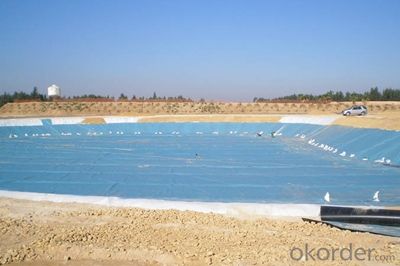
Specification of HDPE Geomembrane for Environmental Projects water conservancy projects landfill mining canal:
I. Thickness: 0.3mm-3. Omm
2.4m-9m in roll width, the length as client ' s request
Features or Property of HDPE Geomembrane for Environmental Projects water conservancy projects landfill mining canal:
I. Good flexibility
2. For service temperature range: -700C-+1IOoC
3. Corrosion resistance, aging resistance
4. Excellent environmental stress cracking resistance property
5. High tensile strength and elongation
Application of HDPE Geomembrane for Environmental Projects water conservancy projects landfill mining canal:
I. Municipal environmental projects, water conservancy projects
2. Landfill cap(closures), mining heap leach pads
3. Pond liner, canal linings, tank linings, raw water treatment reservoirs, retention ponds
4. Waste water treatment lagoon, secondary containment
Production standard:
I. GB/T17643-2011
2. CJ/T234-2006
3. GRI-GM13
Area |
|
Hydraulic | Lagooning and Water Treatment, Ornamental Ponds, Golf Courses Aquaculture and Desalination Water LagoonsTanks, Reservoirs, Liquid WasteFloating Cover SolutionsDrainage and FiltrationShading Cover Solutions |
Environment | Tailing ponds, Leach mining,Landfills,Landfill Capping,Protection against corrosion,Vertical Barriers |
Civil Works | Erosion Control, Secondary Containment, Tunnels,Linear and Surface Works,Consolidation of Margins,Soil Reinforcement,Soil Separation. |
Building | Parkings,Roofing,Soundproofing building |
- Q: Can geogrids be used in soil stabilization for recreational areas?
- Yes, geogrids can be used in soil stabilization for recreational areas. Geogrids are often used to reinforce and stabilize soil, preventing erosion and improving the load-bearing capacity of the ground. This makes them particularly suitable for recreational areas such as sports fields, playgrounds, or park trails where heavy foot traffic or vehicular loads are expected. By installing geogrids, the stability and durability of the soil can be significantly improved, ensuring a safe and long-lasting recreational space.
- Q: Can geogrids be used in reinforcement of foundation slabs?
- Yes, geogrids can be used in the reinforcement of foundation slabs. Geogrids are commonly used to enhance the stability and load-bearing capacity of soil, making them suitable for reinforcing foundation slabs. They help distribute the load more evenly, reduce soil movement, and prevent cracking or settling of the slab.
- Q: Can geogrids be used in stabilization of riverbanks?
- Yes, geogrids can be used in the stabilization of riverbanks. Geogrids are commonly used in civil engineering projects to reinforce soil and prevent erosion. When used in stabilization of riverbanks, geogrids can help retain the soil, provide structural support, and reduce the risk of erosion caused by the river's flow.
- Q: How do geogrids enhance the stability of railway track cuttings?
- Geogrids enhance the stability of railway track cuttings by providing reinforcement and confinement to the soil. They improve soil strength, prevent soil erosion, and distribute loads more evenly, thereby reducing the likelihood of slope failure and maintaining long-term stability of the track cuttings.
- Q: Introduction of steel plastic grille
- By a single band,
- Q: What are the factors that affect the cost-effectiveness of geogrid-reinforced structures?
- There are several factors that can affect the cost-effectiveness of geogrid-reinforced structures. These include the type and quality of geogrid material used, the design and engineering of the structure, the site conditions and soil properties, the construction methods employed, and the maintenance and lifespan of the structure. Additionally, factors such as material availability and transportation costs, labor expenses, and any required permits or regulatory compliance can also impact the overall cost-effectiveness of geogrid-reinforced structures.
- Q: How do geogrids improve the performance of geocomposites?
- Geogrids improve the performance of geocomposites by providing reinforcement and stabilization. They enhance the load-bearing capacity and tensile strength of the geocomposite, helping to prevent soil erosion and improve overall stability. Geogrids also increase the longevity and durability of the geocomposite, making it more resistant to deformation and damage.
- Q: Geogrid and geotextile which effect is good
- Geotextile has excellent filtration, isolation, reinforcement and protection effect, high tensile strength, good permeability, high temperature resistance, anti freezing, anti-aging, corrosion resistance
- Q: Which is the high price of steel plastic geogrid and fiberglass geogrid
- If you take the worst plastic steel and the best glass fiber ratio, the latter price is high
- Q: Are geogrids resistant to chemical degradation?
- Yes, geogrids are generally resistant to chemical degradation. They are designed to withstand exposure to various chemicals commonly found in soil and water, such as acids, alkalis, and organic compounds. This chemical resistance ensures the long-term durability and performance of geogrids in different environmental conditions.
Send your message to us
Fibreglass Geogrids Reinforced HDPE Geomembrane for Environmental, Water Conservancy, Landfill, Mining, and Canal Projects
- Loading Port:
- Tianjin
- Payment Terms:
- TT OR LC
- Min Order Qty:
- 88 m²
- Supply Capability:
- 1800000 m²/month
OKorder Service Pledge
OKorder Financial Service
Similar products
Hot products
Hot Searches
Related keywords
